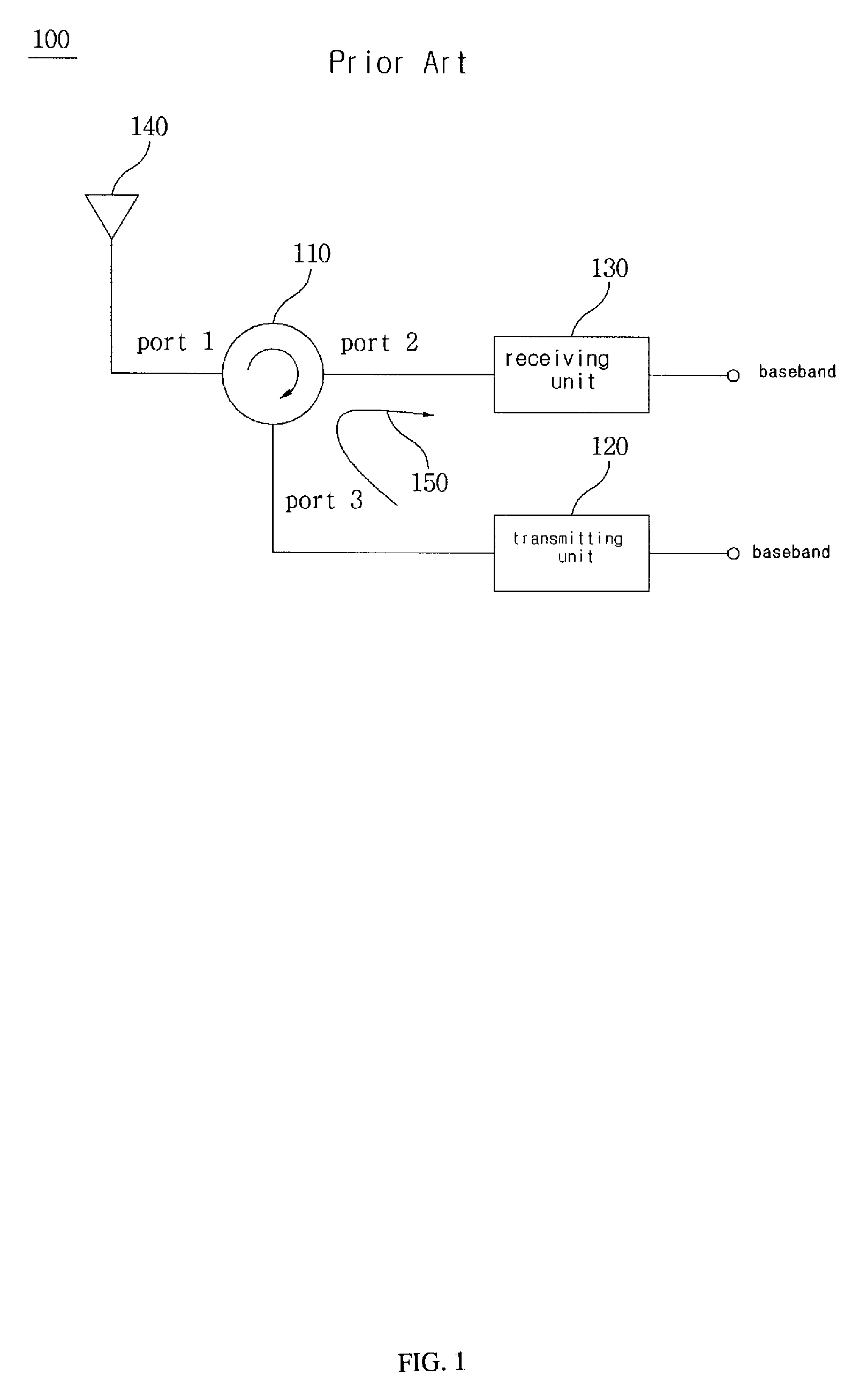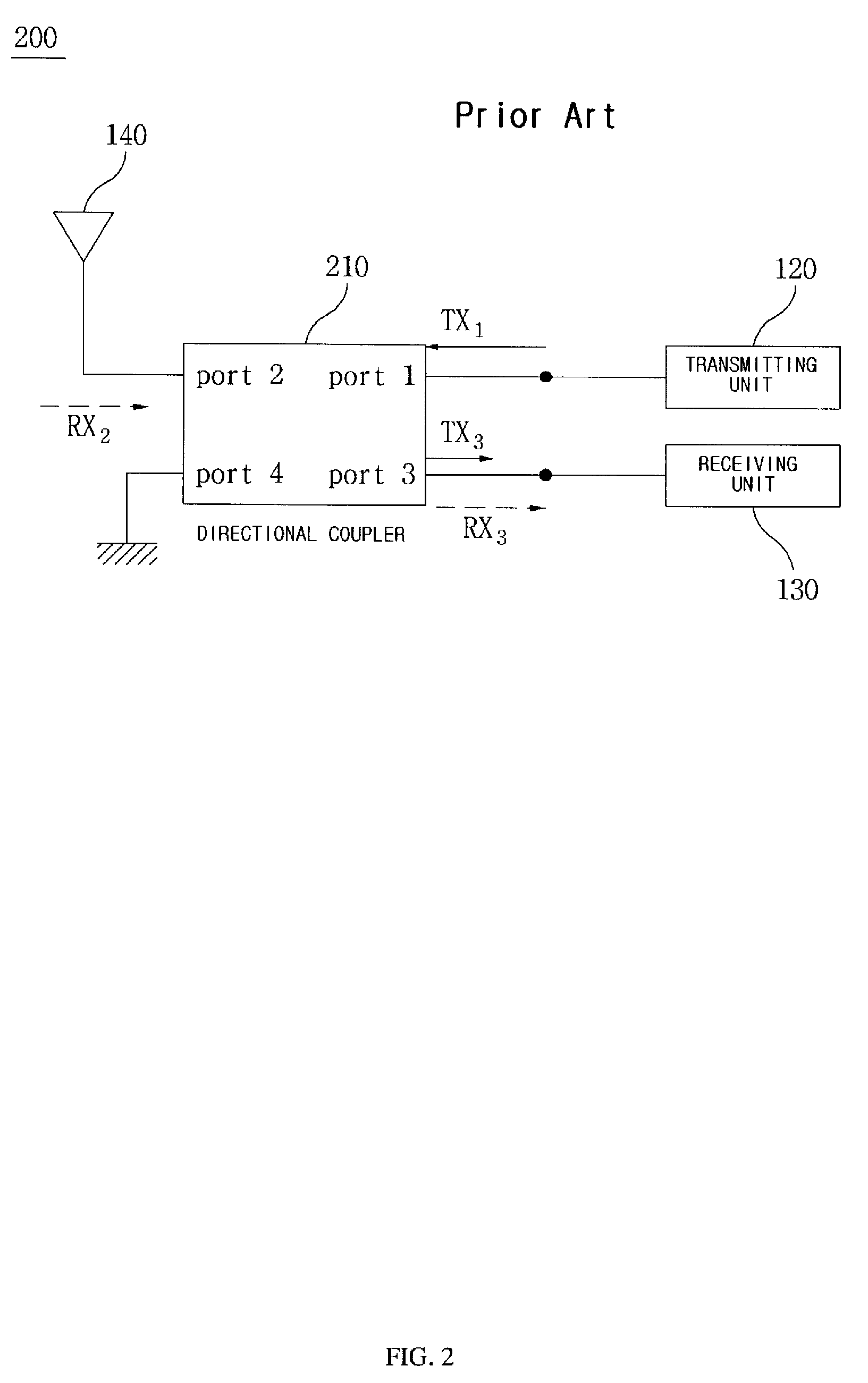Coupling apparatus for dividing receiving and transmitting signals and control method thereof
a technology of receiving and transmitting signals and coupling apparatus, which is applied in the direction of waveguide type devices, duplex signal operation, instruments, etc., can solve the problems of deteriorating the performance of the receiving signal, the inability to isolate and the difficulty in identifying the rfid tag signal, etc., to achieve the effect of maximizing the isolation effect of the leakage signal of the transmitting unit to the receiving uni
- Summary
- Abstract
- Description
- Claims
- Application Information
AI Technical Summary
Benefits of technology
Problems solved by technology
Method used
Image
Examples
modified example of embodiment 1
[0064]FIG. 12 is a block diagram illustrating an RF transmitting unit 604 with a coupling apparatus 610 using a high frequency transformer 211 in place of a directional coupler 210 being an example of the four-port circuit 500 in accordance with an embodiment of the present invention.
[0065]The coupling apparatus 610 of FIG. 12 includes a high frequency transformer 211, an attenuator 630, and a subtracter 670. The high frequency transformer 211 includes four ports, namely, port 1, port 2, port 3, and port 4. The relationship between respective ports is the same as in FIG. 5. Since port 1 and port 2 form a through path, when a transmitting signal TX1 from the transmitting unit 120 is input to port 1, a signal TX2 attenuated due to an insertion loss is output to port 2 (equation 1). Since port 1 and port 4 are coupled with each other, when a transmitting signal TX1 from the transmitting unit 120 is input to port 1, a coupled signal TX4 is output to port 4 (equation 2). Since port 1 and...
embodiment 2
Adaptive Change of Attenuation Value
[0069]FIG. 13 is a block diagram illustrating an RF transceiver 1300 using a variable attenuator 1330 capable of variably controlling an attenuation value of an attenuator in accordance with an embodiment of the present invention.
[0070]FIG. 14 is a block diagram illustrating an RF transceiver 1400 using a variable attenuator 1330 capable of variably controlling an attenuation value of an attenuator in accordance with another embodiment of the present invention.
[0071]Upon a usage of the variable attenuator 1330, although characteristics of the four-port circuit 500 or other components such as a PCB are changed, a desired isolation performance can be achieved. The RF receiving unit 1300 of FIG. 13 includes an antenna 140 transmitting and receiving an RF signal, a transmitting unit 120 converting a baseband signal into an RF transmitting signal TX1, a coupling apparatus 1301, a receiving unit 1340 receiving an output of the coupling apparatus 1301 as...
embodiment 2-1
[0073]The RF transceiver 1300 of FIG. 13 includes the transmitting unit 120, the receiving unit 1340, the coupling apparatus 1301, the antenna 140, and the baseband unit 660.
[0074]The coupling apparatus 1301 includes a four-port circuit 500 and a variable attenuator 1330 capable of variably controlling an attenuation value.
[0075]The receiving unit 1340 includes a low-noise amplifier 1341, an RSSI measuring unit 1342, and an attenuator control unit 1343 controlling an attenuation value of a variable attenuator 1330 based on the measured RSSI.
[0076]A transmitting signal TX1 provided to the transmitting unit 120 is input to port 1 of the four-port circuit 500, the antenna 140 is connected to port 2 thereof, and port 4 thereof is connected to an input terminal of the variable attenuator 1330. The low-noise amplifier 1341 included in the receiving unit 1340 substracts and amplifies outputs RX3 and TX3 of the port 3, and outputs RX5 and TX5 of the variable attenuator 1330. The RSSI measur...
PUM
 Login to View More
Login to View More Abstract
Description
Claims
Application Information
 Login to View More
Login to View More - R&D
- Intellectual Property
- Life Sciences
- Materials
- Tech Scout
- Unparalleled Data Quality
- Higher Quality Content
- 60% Fewer Hallucinations
Browse by: Latest US Patents, China's latest patents, Technical Efficacy Thesaurus, Application Domain, Technology Topic, Popular Technical Reports.
© 2025 PatSnap. All rights reserved.Legal|Privacy policy|Modern Slavery Act Transparency Statement|Sitemap|About US| Contact US: help@patsnap.com



